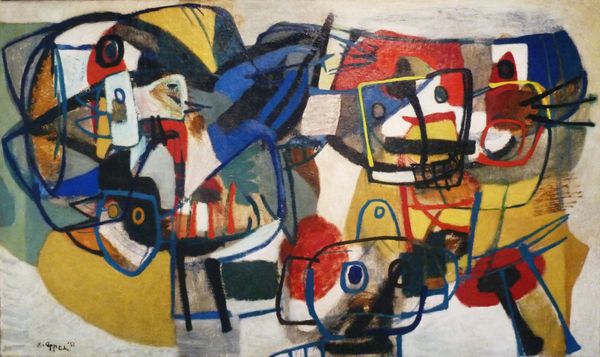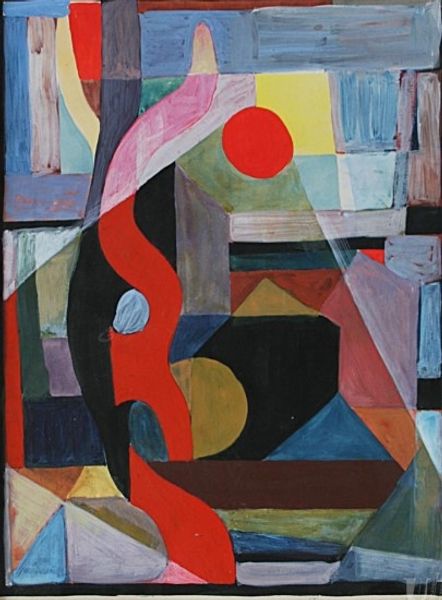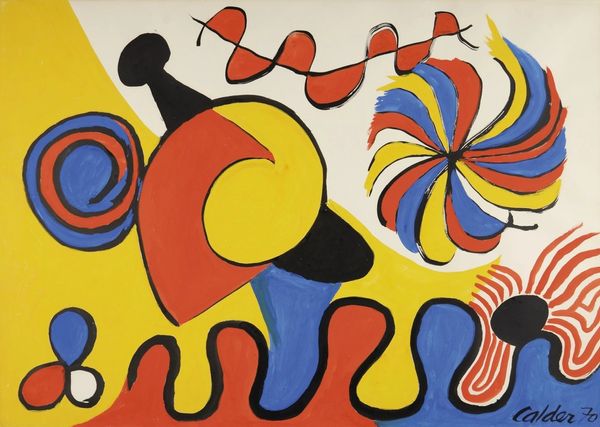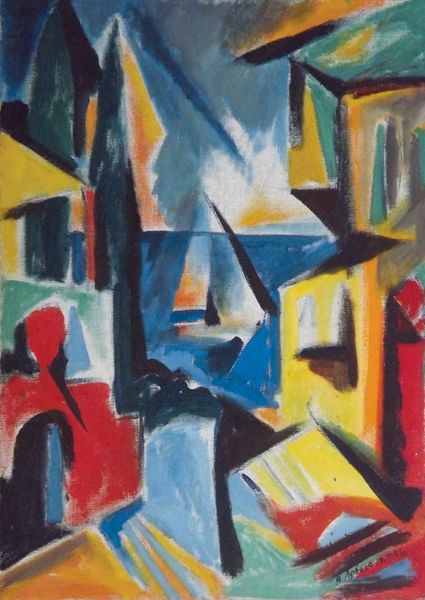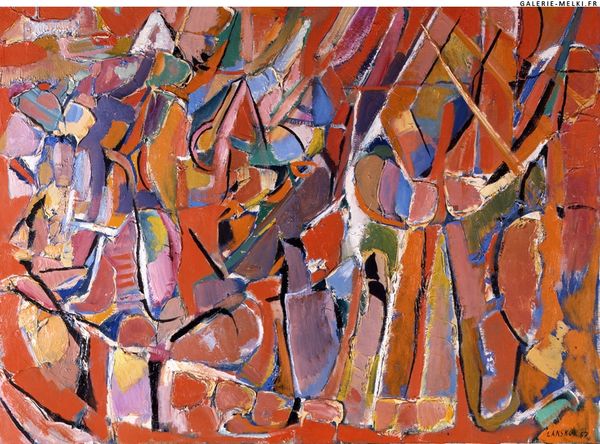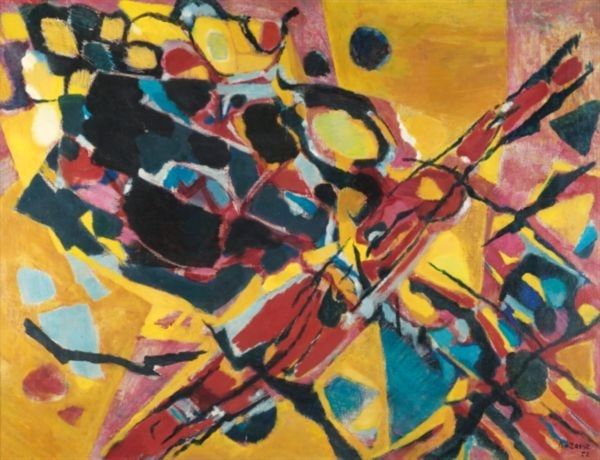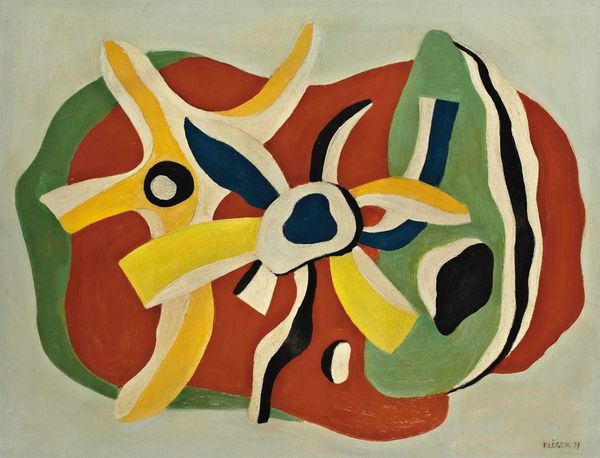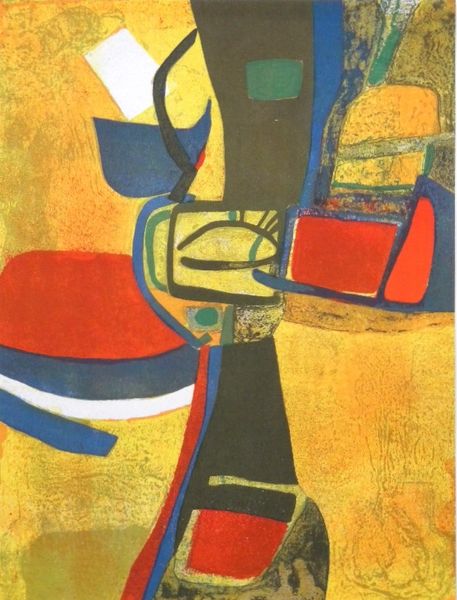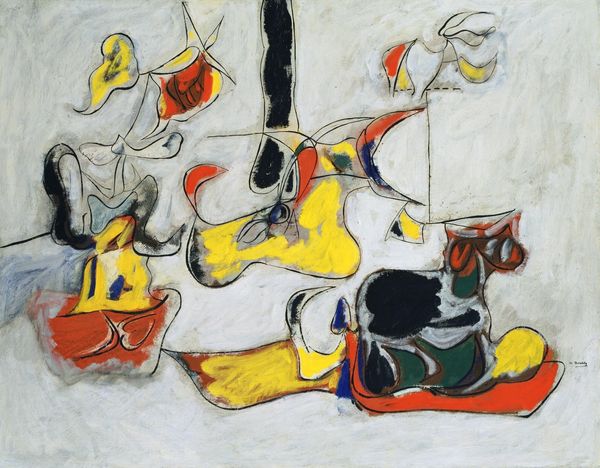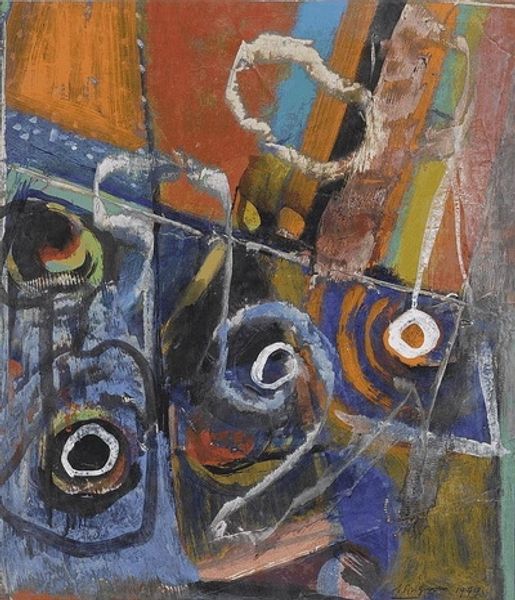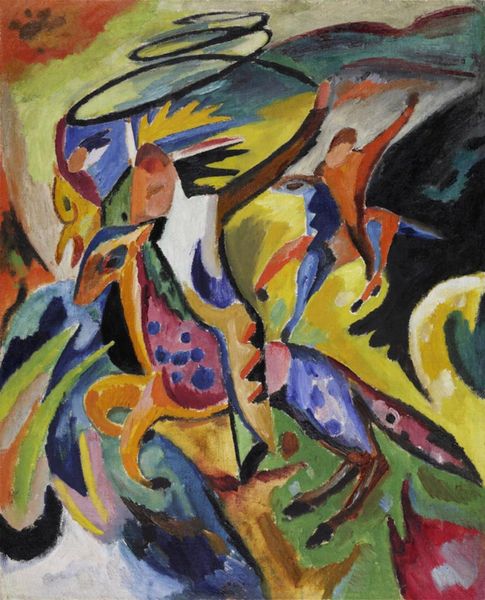
#
cobra
Copyright: Karel Appel,Fair Use
Curator: Karel Appel's "Horse and Flute Player," from 1951, just leaps off the canvas with its boldness. It's an oil painting, and I find the colors so energetic. What are your initial thoughts? Editor: It's certainly... loud. All those primary colors. The figures are simplified almost to the point of abstraction. I'm curious, how do you interpret this work, considering Appel's place in the Cobra movement? Curator: Well, Cobra aimed to break free from academic constraints and tap into raw, unbridled expression, similar to the artistic strategies employed by children or folk artists. "Horse and Flute Player," in that context, could be viewed as a rejection of post-war societal norms. It reclaims primal, childlike vision as a form of cultural rebellion against a society still recovering from unimaginable trauma. Editor: That's fascinating. I hadn’t considered it as a form of rebellion. Are you suggesting Appel was intentionally trying to provoke a reaction? Curator: Absolutely. Think about the context: the aftermath of World War II. The intense colors, the distorted figures, the raw application of paint – it's all a deliberate challenge to the status quo, a visceral response to a world struggling to rebuild and redefine itself. Does knowing this make you see it differently? Editor: It does. I see it less as arbitrary abstraction and more as a conscious statement. I guess I originally missed that critical layer of historical and cultural critique. Curator: Exactly! Understanding the context helps us decode the visual language and appreciate the deeper meaning. Art becomes a tool for social commentary and resistance. Editor: So it becomes about what Appel’s work _does_ rather than what it depicts. Thank you! Curator: My pleasure! That intersection of aesthetics and activism makes art endlessly engaging, don't you think?
Comments
No comments
Be the first to comment and join the conversation on the ultimate creative platform.

